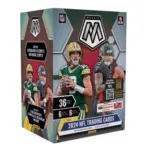This section compares his advanced stats with players at the same position. The bar represents the player’s percentile rank. The longer the bar, the better it is for the player.
The bars represents the team’s percentile rank (based on QB Rating Against). The longer the bar, the better their pass defense is. The team and position group ratings only include players that are currently on the roster and not on injured reserve. The list of players in the table only includes defenders with at least 3 attempts against them.
@ Steelers
Wednesday, Dec 25th at 1:00PM
Overall QB Rating Against
76.1
Cornerbacks
64.5
Safeties
91.7
Linebackers
86.6
Mahomes entered last season with questions about how he would fare without speedster Tyreek Hill for the first time. All he did was finish QB1 in fantasy, claim another MVP, win another Super Bowl and prove he’s the best quarterback on the planet. How he did it, though, is the interesting part. Mahomes threw deep on a career-low 8.2 percent of his attempts, 24th in the league. Instead, he chewed up the intermediate field — no quarterback had more attempts than Mahomes’ 173 in the range of 8-18 yards. That’s a logical strategy when you have the NFL’s best tight end in Travis Kelce. He and his teammates totaled a league-high 2,850 yards after the catch, 54.2 percent of Mahomes’ career-high 5,250 passing yards, giving him league’s second-highest YPA at 8.1. Mahomes also capitalized on a league-high 72 red-zone drives for 34 of his league-leading 41 TD passes. A slight regression there is possible, and JuJu Smith-Schuster (78 catches) is gone. But Marquez Valdes-Scantling is back as the deep threat, Kadarius Toney — who joined K.C. midseason last year — is likely to get more work, and the team drafted WR Rashee Rice in the second round. The offensive line is still solid, with Jawaan Taylor replacing Orlando Brown. And, of course, there’s Kelce, with whom Mahomes teamed for a 118.7 passer rating, the third highest by a QB-receiver tandem in the league (min. 75 targets). Throw in another 350 yards and a couple scores on the ground and Mahomes could be one of the few QBs to repeat as QB1.
Mahomes had an erratic season in 2021. In the first six games, he had 18 TD passes but eight interceptions, more than he had in either of the previous two years. In the next six games, he had just seven TDs — five of which came in one game. But in his last five games, he went on a 12/1 TD/INT run to finish QB4 in fantasy. Mahomes’ YPA dropped to a career-low 7.4 (13th) as his average target depth fell to 7.3, 25th in the league, but he helped his fantasy value with a career-high 381 rushing yards (and two scores). He might need to pad his stats with rushing production again this year after playmaker Tyreek Hill was traded to the Dolphins. The Chiefs signed JuJu Smith-Schuster, who likely becomes the new No. 1 WR. Smith-Schuster is not a burner but should thrive with a QB who can actually throw downfield. The new deep threat is Marquez Valdes-Scantling, who had his moments in Green Bay but also had a knack for untimely disappearances and dropped passes. MVS joins fellow speedster Mecole Hardman, still looking to break out heading into Year 4. The Chiefs also added more speed in the draft, picking Skyy Moore in the second round. The group isn’t without potential, though TE Travis Kelce might need to take on an even larger target share than usual. While Hill is undoubtedly a big loss, Mahomes still has an excellent coaching staff and offensive line, and he’s talented enough to remain top 5 in fantasy even if it’s a committee effort to replace his favorite receiver.
It’s too bad Mahomes sat out Week 17 last year because he likely would have gotten to 5,000 passing yards and 40 TD passes had he played. To put that in perspective, 5,000 and 40 has been done six times in NFL history, and only one QB has done it twice (Drew Brees). Mahomes would have done it twice in his first three years as a starter. He led the league in passing yards per game last season (316.0), but he’s not simply a product of volume (5th in attempts) — he ranked fourth in average target depth at 9.0. He’s in the perfect system to exploit his arm strength and play-making ability, and he rarely makes mistakes — with six interceptions on 588 attempts, his 1.0 INT percentage tied for the league lead (Aaron Rodgers). While his completion percentage on downfield attempts was a three-year low (66.3), he made the completions count, leading the league in TD pass rate on attempts of 20-plus yards (16.9 percent) and tying Rodgers with an NFL-high 12 downfield TD passes. Defenses can’t blitz him much (32nd of 35 QBs in blitz rate) because he’ll make them pay. He was the only QB without an interception vs. the blitz (min. 65 attempts), while throwing 12 TD passes. He’s also lethal on the move. Outside the pocket, he tied Russell Wilson with a league-high 13 TD passes and was one of two QBs with at least 65 attempts and no interceptions (Lamar Jackson). His supporting cast is among the best in the league with Tyreek Hill, Travis Kelce and Clyde Edwards-Helaire. And Mecole Hardman, who has 4.33 speed, could get more targets this year with Sammy Watkins gone. It’s no surprise Mahomes is the betting favorite (5/1) for NFL MVP.
It didn’t take an expert to predict Mahomes would regress from his otherworldly 50/5,000 season of 2018, but Mahomes still had a remarkable season last year. Namely, he was even more lethal downfield last season than in 2018, leading the league in passer rating, touchdowns and TD percentage (min. 30 attempts) on throws longer than 20 yards. He improved his TD rate by 6.6 percentage points (12.2 to 18.8) on deep throws, and his rating jumped by nearly 30 points as he cut his interceptions from sixth most (7) to sixth fewest (2). Overall, Mahomes had 96 fewer attempts thanks to a dislocated knee that cost him two and a half games. Prorated to the 580 attempts he had in 2018, he’d still approach 5,000 yards. The biggest regression was in touchdown passes, largely because of his performance in the red zone. His red-zone TD pass rate fell from 36.5 percent to 19.6, his TD passes from 35 to 11. Considering the league rate last year was 23.2 percent, a healthy Mahomes should do better near the goal line this season. Mahomes also has perhaps the league’s best collection of skill players, including a trio of speedy wideouts in Tyreek Hill, Sammy Watkins and Mecole Hardman, while tight end Travis Kelce kills defenders underneath and up the seam. The Chiefs also added first-round pick Clyde Edwards-Helaire, considered the best receiving back in this year’s draft. And, of course, aggressive play caller Andy Reid is always willing to take shots and chuck the ball around. In two seasons as starter, Mahomes has a league MVP and a Super Bowl MVP. It shouldn’t surprise anyone if he wins either — or both — again this season.
Entering last season, the question in Kansas City was less about Mahomes’ NFL aptitude than whether coach Andy Reid would truly open the offense or play it cautious with his first-year starter. Well, Reid went for broke, and the cannon-armed Mahomes made it pay off. He threw a league-high 80 passes longer than 20 yards, accounting for 13.8 percent of his attempts (most among QBs with at least 450 passes), and led the league with 10 TDs on those throws. Mahomes also ranked second in YPA (8.8) and sixth in average target depth (9.2). Easily the MVP, he became the second QB in NFL history after Peyton Manning (2013) to pass for 5,000-plus yards and 50 touchdowns, his 8.6 TD percentage the highest since Aaron Rodgers in 2011 (9.0). With Tyreek Hill available for the start of the 2019 campaign, things are looking rosy again for the Chiefs offense. Hill was Mahomes’ favorite deep target last season, catching a league-high eight passes of 40-plus yards. Next up are the oft-injured Sammy Watkins and second-round pick Mecole Hardman. Both have questions, but both are fast enough (4.33 40 for Hardman) to stretch the field. The almost-uncoverable Travis Kelce is a constant, and the backfield is led by Damien Williams, who shined after Hunt exited, and free-agent addition Carlos Hyde. Regression is inevitable – Mahomes is not likely to outpace the No. 2 QB by four fantasy points per game again – but in Reid’s offense it shouldn’t be crippling.
The Patrick Mahomes era begins this year in Kansas City after the team traded Alex Smith to the Redskins in the offseason. Mahomes was decent in his lone start Week 17 last season, but the bigger question this year is what the Chiefs offense will look like. Coach Andy Reid took the cautious approach with Smith his first four years in Kansas City, averaging a mere 32 passes per season more than 20 yards downfield. Last year, though, Smith was unleashed, attempting 53 such passes in an explosive offense. (Ironically, he had fewer interceptions (5) than he averaged over the “cautious” period (7).) Offensive coordinator Matt Nagy is gone, replaced by Eric Bieniemy, but either way, it’s still Reid’s show. The 6-2, 225-pound Mahomes certainly has the arm for a vertical game. And he has plenty of weapons, starting with Tyreek Hill, who might be the league’s fastest man. On the other side is new arrival Sammy Watkins, who can also stretch the field and has a bit more bulk than Hill. Then there’s Travis Kelce, one of the best tight ends in football, and Kareem Hunt, who led the league in rushing as a rookie last year. All that talent might encourage Reid to be more aggressive, rather than content to ask little of Mahomes besides taking care of the ball. If Mahomes’ inner gunslinger is allowed to emerge, drafting the unproven quarterback will pay off for fantasy owners.
The Chiefs traded up 17 spots to 10th overall to draft Mahomes, whose cannon arm, occasional recklessness and gunslinger mentality evoked comparisons on draft day to head coach Andy Reid’s former student, Brett Favre. Mahomes, of course, is a long way from Favre, so Reid and the Chiefs view him as a project — Alex Smith will start for at least another year. At 6-2, 225, with 4.8 speed, Mahomes probably won’t be a huge rushing threat but should be fast enough to escape pressure and make occasional plays with his feet. The biggest knock on him is the Texas Tech system, which continually fails to produce quality NFL quarterbacks. But Mahomes has the size, athleticism and physical skills to not only buck the trend but end up as the best quarterback from this year’s draft class.


